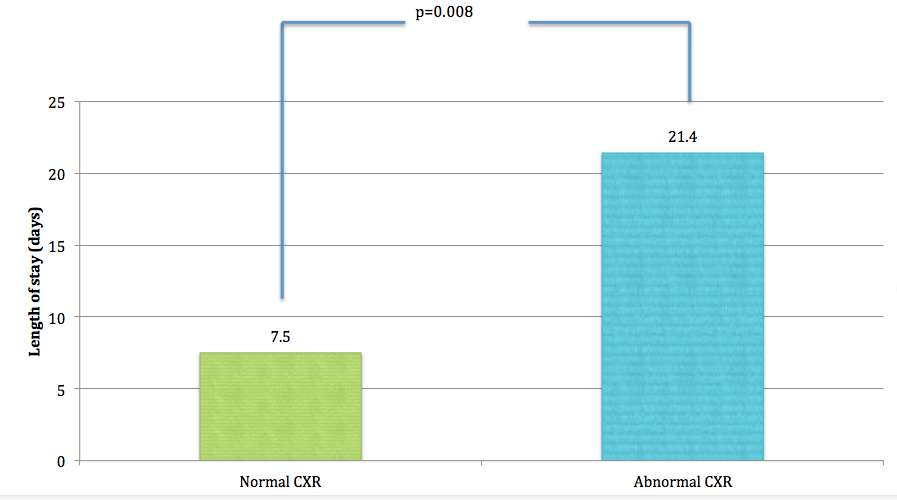Chest radiographs as predictors of length of stay in right-sided infective endocarditis
Abstract
Background: Right-sided infective endocarditis (IE) occurs less frequently than left-sided IE and is usually caused by intravenous drug use or intravascular device-related infection. Septic pulmonary embolism can cause abnormal chest radiograph (CXR), possibly raise pulmonary artery pressures, and may influence clinical and hospital outcomes.Methods: We conducted a retrospective chart review of patients diagnosed with right-sided IE from January 2000 to December 2011. Clinical parameters were collected and analyzed to define patients’ characteristics and the association with clinical outcomes, including length of stay (LOS).
Result: 208 eligible patients had a diagnosis of IE; 19 (9.1%) had right-sided IE. Most were related to intravenous drug use (73.7%) and presented with dyspnea and fever (55.6%). 78.9% of patients had abnormal CXR (parenchymal involvement, cardiomegaly, or pleural effusion). Echocardiography revealed tricuspid valve involvement in all patients; their median mean pulmonary artery pressure (MPAP) by transthoracic echocardiographic estimation was 26.4 mm Hg. Patients with abnormal CXR had significantly longer LOS than those with normal CXR (21.4 vs. 7.5 days, p = 0.008). MPAP was not associated with LOS (p = 0.72).
Conclusion: Right-sided IE is often associated with intravenous drug use. The majority of these patients have mild pulmonary hypertension, which could be due to hyperdynamic circulation and probable septic emboli. CXR with pulmonary involvement may be useful in predicting the length of hospital stay in these patients and identifying patients with more complications.
Downloads








